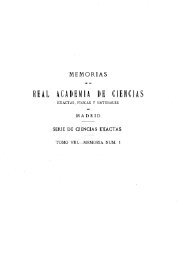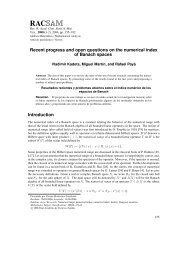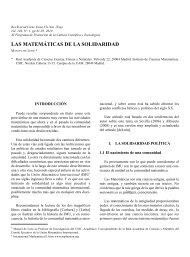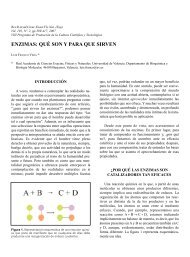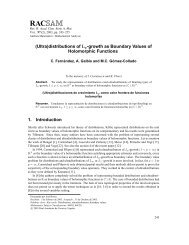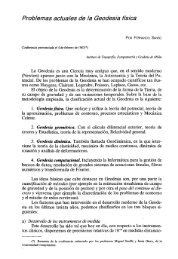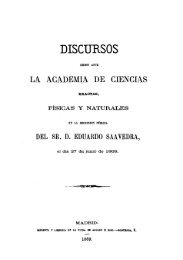The water footprint and virtual water exports of Spanish tomatoes
The water footprint and virtual water exports of Spanish tomatoes
The water footprint and virtual water exports of Spanish tomatoes
- No tags were found...
You also want an ePaper? Increase the reach of your titles
YUMPU automatically turns print PDFs into web optimized ePapers that Google loves.
D. CHICO et al. 35Balance <strong>of</strong> the <strong>Spanish</strong> Ministry <strong>of</strong> the Environment <strong>and</strong>Rural <strong>and</strong> Marine Affairs, which presents rather high valuesfor excess Nitrogen (MARM, 2008), 112 kgN/ha as a nationalaverage. In the case <strong>of</strong> Chapagain <strong>and</strong> Orr, they consideredthe leaching Nitrogen to be 25kg/ha from open <strong>and</strong>15 kg/ha from covered systems following Mema et al. (2005).As for the study <strong>of</strong> Aldaya et al. used an estimated leaching<strong>of</strong> 10 % <strong>of</strong> the estimated applied rate <strong>of</strong> 110 kg/ha fromFertistat database (FAO, 2010).<strong>The</strong> main producing provinces (Badajoz, Almería <strong>and</strong> ina lesser extent Murcia, Las Palmas, Granada, Sevilla,Cáceres <strong>and</strong> Navarra) are among the most effective in terms<strong>of</strong> l/kg, having achieved large yields <strong>and</strong> productivitiesthanks to intensification (García, 2009; Suárez, 2002). However,due to their huge cumulative total productions their<strong>water</strong> <strong>footprint</strong>s are also significantly higher than the rest.This shows the pressure on the <strong>water</strong> resources in theseprovinces. For instance, in Almeria most <strong>of</strong> the aquifers inthe province are at risk <strong>of</strong> non-compliance with the objectivesby the EU Water Framework Directive (AndalusianWater Agency, 2010), so are in Badajoz the ground<strong>water</strong>bodies <strong>and</strong> the Guadiana river itself (CHG, 2009). As expectedfor a horticultural crop, the green <strong>water</strong> <strong>footprint</strong> isalmost negligible, both for rainfed <strong>and</strong> for irrigated openairproduction. An interesting analysis would be the study<strong>of</strong> the social revenues <strong>of</strong> this pressure.As explained above, one <strong>of</strong> the reasons for the different<strong>water</strong> <strong>footprint</strong> results from other studies may be relatedto the different data used <strong>and</strong> assumptions taken to modelthe crop <strong>water</strong> use. A change in, for example, the length <strong>of</strong>the growing period may notably vary the crop <strong>water</strong> use<strong>and</strong> thereafter the green <strong>and</strong> blue <strong>water</strong> <strong>footprint</strong> obtained.Despite this, the values obtained here were in the samescale as those from other authors for the green <strong>and</strong> blue



